For recent talks, see our weekly Journal Club seminar series.
Resilience and Data Science for Networked Complex Systems
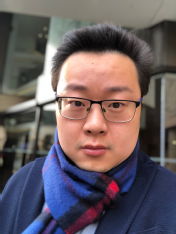
- Dr. Weisi Guo
- University of Warwick
- Tuesday, 19 Mar 2019, 14.00
- Computational Foundry, Boardroom 401
We live in a time of increased uncertainty and there is a need to monitor our infrastructures and ecosystems to build greater resilience. Many of our critical infrastructures and ecosystems have a networked dimension. Whilst the resilience and data sampling process is well understood for single dynamical entities or stationary graphs, it is not understood for large-scale networked dynamical systems. This is particularly the case when the size of the network is large (e.g. millions of nodes at the national scale). This talk will present recent advances in understanding the resilience of dynamical networks and optimal sampling theory for data collection on them. This will inform the UK in establishing both a complexity twin and a digital twin for its critical systems.
Dr. Weisi Guo is an associate professor at the University of Warwick and Turing Fellow. He graduated MEng, MA, and PhD (Computer Science) from the University of Cambridge. He has over 13 years of experience in academia and industry, specialising in network science, signal processing, and telecommunications. He currently leads the Data-Embedded-Networks Lab, with 5 post-docs and 9 PhD students and is PI on £1.9m of funding. He has been twice a runner up of the Bells Labs Prize and a recipient of the IET Innovation Award.
Learning to Approximate the Stochastic Differential Equations
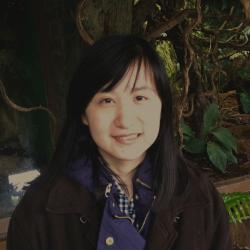
- Dr. Hao Ni
- University College London
- Tuesday, 26 February 2019, 14.00
- Computational Foundry, Boardroom 401
In this talk, motivated by the numerical approximation theory of the stochastic differential equations, Hao proposes an effective algorithm (Logsig-RNN model) to learn the unknown solution map from data by combining the log signature feature set and the recurrent neural network (RNN). The proposed model is proved to have the universality while exhibiting better efficiency compared with RNN with raw data, which is validated by several numerical examples. In addition, it demonstrates superior performance when the sampling frequency of the input data is getting finer and finer. Furthermore, it shows the robustness even for the case the distribution of the driving path in the training set is different from that of the testing set.
Hao Ni is an associate professor in financial mathematics at UCL and a Turing Fellow at the Alan Turing Institute since September 2016. Prior to this she was a visiting postdoctoral researcher at ICERM and Department of Applied Mathematics at Brown University from 2012/09 to 2013/05 and continued her postdoctoral research at the Oxford-Man Institute of Quantitative Finance until 2016. She finished her D.Phil. in mathematics at University of Oxford. Her research interests include stochastic analysis, financial mathematics and machine learning. More specifically she is interested in non-parametric modelling effects of data streams through rough paths theory and statistical models and its various applications, e.g. online Chinese handwritten character and financial data streams analysis.
Academic Research on Cedar Centre
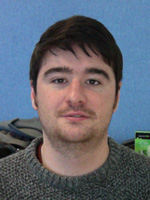
- Dr. Robert Palmer
- Cedar, an NHS-Academic Research Organisation
- Thursday, 26 April 2018, 11:00am
- 504 Faraday Tower
Social Cues in Modeling Local Human Behavior and Its Utility in Human Motion Understanding

- Prof. Shishir K. Shah
- University of Houston, US
- Friday 23 November 2017, 13:00
- 314 Faraday Tower
Human behavior has been extensively studied by sociologists to understand social norms and their utility in crowd dynamics. It has been argued that characteristics that dictate human motion constitute a complex interplay between human physical, environmental, and psychosocial characteristics. It is a common observation that people, whenever free to move about in an environment, tend to respect certain patterns of movement. More often, these patterns of movement are dominated by social mechanisms. While much of computer vision has focused on studies that try to model the physical and environmental characteristics, psychosocial influences have largely been overlooked. Broadly speaking, human motion attributed to psychological and sociological characteristics may be evaluated at three distinct levels; individual, interaction among individuals, and group dynamics. Human movements are generally driven by purpose, making decisions locally based on the extent of information available and the cognitive capacity for calculation, prediction, and action. Our ability to increase our understanding of human motion and activity can be extended through the development of models and algorithms that integrate social cues that codify human behavior. In this talk, I will discuss the role of social cues for modeling local human behavior with specific applications in human motion tracking.
Shishir Shah is Professor and Associate Chair in the Department of Computer Science at the University of Houston, U.S.A. He studied Mechanical Engineering as an undergraduate at The University of Texas at Austin, where he received his B.S. degree in 1994. He received his M.S. and Ph.D. degrees in Electrical and Computer Engineering from The University of Texas at Austin. His main research interests include computer vision, pattern recognition, and machine learning with specific focus on human behavior modeling and analysis, scene understanding, video analytics, biometrics, and microscopy image analysis. Over the past 20 years, his research has contributed to knowledge in the areas of computer vision for navigation, surveillance, object recognition, biomedical image analysis, and pattern recognition. He has authored numerous papers on object recognition, sensor fusion, statistical pattern analysis, biometrics, and video analytics. Prof. Shah currently serves as an Associate Editor for Image and Vision Computing and the IEEE Journal of Translational Engineering in Health and Medicine. He is a Senior Member of the IEEE.
Non-Stationary Learning in EEG-based Brain-Computer Interface

- Dr. Haider Raza
- Swansea University, UK
- Wednesday 28 June 2017, 12:00
- 314 Faraday Tower
Campylobacter: Major Chicken and Human Pathogens

- Prof. Tom Humphrey
- Swansea University, UK
- Wednesday 17 May 2017, 12:00
- 314 Faraday Tower
Current Trends in Mass Spectrometry-based Quantitative Proteomics

- Dr. Huaizhong Zhang
- University of Manchester, UK
- Friday 15 August 2014, 14:00
- 314 Faraday Tower
This talk will focus on introducing the label-free techniques, its image processing/software development and recent advances in the quantitative analysis of LC-MS in Proteomics. In Proteomics, Liquid Chromatography Mass spectrometry (LC-MS) has emerged as a central technique for telling which proteins are in the samples/organisms and how much of these proteins are present. This is therefore able to present valuable information on biomarkers and pathways for handling the challenges in disease diagnosis and prognosis. Due to extremely high throughput from LC-MS, robust and sensitive signal extraction/image processing is crucial to the potentials of LC-MS in Proteomics.
Respiration Simulation: Application in Treatment Planning and Training Simulators
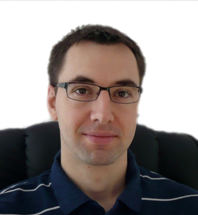
- Dr. Pierre-Frederic Villard
- Nancy University, France
- Friday 14 June 2013, 13:00
- 314 Faraday Tower
This talk will focus on respiration simulation applied to two different application contexts: treatment planning in radiotherapy and training simulators for ultrasound-guided liver biopsy. Anatomy and physiology of the respiration system will be reviewed, focusing on each organ of interest, which depends on the procedure. For each context, the respiration modelling technique will be introduced in order to fit with the application requirement. Final results of these different studies will be presented using videos, clinical validation studies, and user feedbacks.
Dr Villard obtained a PhD in Computer Graphics from University Claude Bernard Lyon I in 2006. After finishing his PhD he worked as a post-doctoral research fellow in the Harvard Medical School in the simulation Group, in the CIMIT laboratory and in the Massachusetts General Hospital, in Boston (USA). He joined then Imperial College in the Department of Biosurgery and Surgical Technology research staff as a Research Associate at the end of May 2007 until September 2009 when he was recruited as a lecturer at Nancy University. His main research interest are in medical visualisation and simulation, augmented reality and image guided surgery. He specially focuses on soft-tissue modelling, Finite Element Method, and Medical Images Processing.
Enhancing Medical Simulation with the use of Haptics

- Prof. Nigel John
- Bangor University
- Friday 17 May 2013, 13:00
- 314 Faraday Tower
This talk will present an overview of several medical simulators that the Visualization and Medical Graphics group at Bangor University has built over the past decade. In particular I will discuss how the use of haptics (both force and tactile feedback) has provided an important component of these simulators. Both off the shelf haptics hardware has been deployed together with custom built devices. Most recently we have been building a tactile device using focussed airboune ultrasound waves to simulate a human arterial pulse. Software interfaces will also be covered.
Data Linkage, Data Mining and Knowledge Management

- Dr. Shangming Zhou
- Swansea University
- Friday 10 May 2013, 13:00
- 314 Faraday Tower
The explosive growth in the amount of data created in medical and health sciences presents big methodological challenges in terms of measurement, data quality and statistical analysis. There have been constant struggles for medical researchers, doctors, nurses, computer scientists and statisticians to manage, improve access and make use of these datasets. For example, e-health researchers have made great efforts to perform data linkage of relevant and disparate health, socio-economic resources.
On the other hand, the massive amount of health-related datasets offer opportunities for identifying and exploring new areas in medical and health sciences. The large health-related datasets generated by many organizations are precious strategic resources. Now making use of these strategic resources will inevitably lead to improving the qualities of public health and health decisions, while advances in data mining research and technology have made it possible to solve many interesting problems in health informatics from large and complex data sets.
In this talk, we would like to present our recent research efforts on data linkage, data mining and knowledge discovery to tackle challenging problems in health informatics.
Multivariate Pattern Analysis in Understanding Cognitive Processing
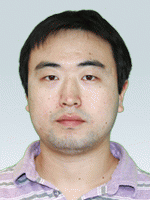
- Dr. Jiaxiang Zhang
- Cambridge University MRC Brain Sciences Unit
- Friday 16 November 2012, 13:00
- Robert Recorde Room
The use of multivariate pattern analysis (MVPA) for analysing functional magnetic resonance imaging (fMRI) data has attracted great interest over the last decade. This method takes advantage of aggregating information across multiple voxels with different response selectivity and has been shown to be more sensitive than conventional univariate approaches. This talk will first introduce the necessity and benefits of extracting multivariate pattern information from fMRI data, and outline the analysis pipeline. I will then discuss how one can combine fMRI measurements and the MVPA method to understand the neural basis of cognitive functions. This talk will show applications of the MVPA method that reveal new insights into the functional organization and properties of the neural systems for goal-directed behaviours, and the short-term learning-dependent plasticity in the human brain. It will further highlight the current challenges and future developments of this method.
3D Human Pose Estimation using Local Solutions

- Dr. Ben Daubney
- Swansea University
- Friday 9 November 2012, 13:00
- Robert Recorde Room
Estimating human pose in a single or sequence of images remains an open problem in computer vision. A popular method to achieve this is to use a part based approach, where parts are initially located independently and then assembled into likely configurations. Whilst algorithmically efficient, in reality this approach results in a poorly constrained model with almost twice the degrees of freedom in comparison to a human body modelled as a kinematic chain. In this talk I will present our recent work that exploits the benefits of a part based approach, whilst also maintaining the constraints and low dimensionality of a kinematic chain. We demonstrate this approach applied to both pose estimation in single images and 3D tracking over a video sequence.
Patient-specific modelling of the cardiovascular system

- Dr. Rhodri Bevan
- Swansea University
- Friday 12 October 2012, 13:00
- Robert Recorde Room
Clinical observations have shown that atherosclerotic disease typically occur at regions of complex haemodynamics such as arterial bifurcations. Simulating the blood flow within the artery can provide understanding to the genesis and diagnosis of atherosclerotic plaques. Since cardiovascular disease is the principle cause of death in the United States, Europe and regions of Asia, this topic is of particular importance. Research has found that low or oscillatory wall shear stress is associated with atherogenesis and high oscillatory shear stresses have been shown to induce inflammatory pro-atherogenesis effects such as monocyte adhesion. In the present study, the arterial geometries were reconstructed using AMIRA and an in-house meshing software. Boundary layer meshes were employed to accurately resolve high near-wall velocity gradients inside the artery, which is important for accurate assessment of the wall shear stress. A fully explicit solution strategy was employed for the fluid solver, using the artificial compressibility form of the characteristic based split scheme. In order to analyse the transient flow within the arteries, haemodynamic wall parameters are utilised. The importance of patient-specific modelling is outlined for both the aorta and the carotid artery.
Challenges for Computational Biomechanics for Medicine

- Professor K. Miller, Director of Intelligent Systems for Medicine Laboratory
- The University of Western Australia
- Thursday 7th June 2012, 14:00
- Civil and Computational Lecture Theatre
Reconstructing Coronary Vessels from Biplane Angiography
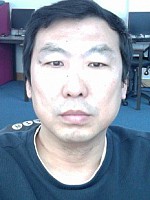
- Dr. Dongbin Chen
- Brunel University
- Tuesday 29th May 2012, 12:30
- Boardroom
Evolutionary Computing for Tomography Reconstruction in Nuclear Medicine

- Dr. Franck Vidal
- Bangor University
- Monday 26th March 2012, 12:30
- Robert Recorde Room
I will introduce a method that takes advantage of artificial evolution in tomography reconstruction in nuclear medicine. This imaging technique produces datasets that correspond to the concentration of radioactive emitters (radiotracers) through the patient. The method is based on a coevolution strategy (also called Parisian evolution) named "Fly algorithm". Each fly represents a point of the space and acts as a radiotracer. The final population of flies corresponds to the reconstructed data.
Computational Biomechanics in Treatment and Prevention of Cardiovascular Diseases in Africa

- Prof. Thomas Franz, Head of Biomechanical Sciences
- Cardiovascular Research Unit, University of Cape Town
- Thursday 1st March 2012, 14:00
- C2EC Lecture Theatre
Cardiovascular diseases (CVD) will become the leading cause of death by 2020 superseding infectious diseases such as HIV, tuberculosis and malaria. In Africa, a dramatic increase in CVD incidences is expected, predominantly in children, in the near future. This development concurs with the emergence of a new epidemic of obesity, diabetes and uncontrolled hypertension, partially based on improvement of socio-economic conditions and adoption of a western diet. Efficient and affordable strategies for treatment and prevention of CVD are urgently needed. With the trend to therapies based on regenerative medicine, multi-disciplinary approaches are increasingly required. The importance of biomechanics in many of these approaches, alongside cellular bioengineering, advanced biomaterials, and other disciplines is only emerging. This talk will address challenges of biomechanics in treatment of cardiovascular diseases, such as acute myocardial infarction, vascular diseases and rheumatic heart disease, with particular reference to the African situation.
Image Segmentation Models and Numerical Solution Methods

- Professor Ke Chen
- Liverpool University
- Tuesday 4th October 2011, 14:00
- Robert Recorde Room
Edge dection algorithms were the traditional methods for finding feature edges in an image but noise can seriously reduce the efectiveness of such models. More recently, variational segmentation models provide more effective and reliable tools for image processing applications. The Chan-Vese (2001) region based model in two dimensions is widely used.
In this talk, I shall first present some new multigrid algorithms for this model in the three dimensional setting. Then I show some recent works for the task of selective segmentation where pre-defined geometric constraints guide the segmentation models. Such problems are more common in medical imaging than the usual segmentation. Numerical experiments will demonstrate the advantages of the new new models over existing results. Collaborators related to this work include Noor Badshah (Peshawar, Pakistan), Jian-ping Zhang and Bo Yu (Dalian, China) and Lavdie Rada (Liverpool).
Better Learning Algorithms for Neural Networks
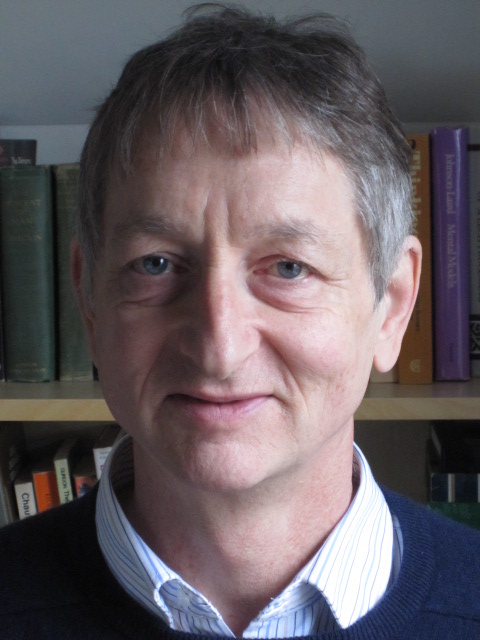
- Prof. Geoffrey Hinton
- Toronto University, Canada
- Thursday 4th August 2011, 14:00
- Robert Recorde Room
Neural networks that contain many layers of non-linear processing units are extremely powerful computational devices, but they are alsovery difficult to train. In the 1980's there was a lot of excitement about a new way of training them that involved back-propagating error derivatives through the layers, but this learning algorithm never worked very well for deep networks that have many layers between the input and the output. I will describe two major theoretical developments that make back-propagation work much better. One of these developments allows backpropagation to beat the current state of the art for recognising objects and phonemes. The other development allows a recurrent neural network to learn a lot about the syntax and semantics of English just by trying to predict the next character in wikipedia. After learning, the recurrent neural network can generate novel and plausible pieces of text.
Active Visual Search
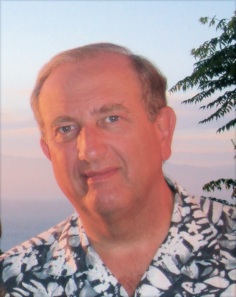
- Prof. John Tsotsos
- York University, Canada
- Wednesday 25th May 2011, 12:30
- Robert Recorde Room
Active perception uses intelligent control strategies applied to the data acquisition process that depend on the current state of data interpretation and has a history that pre-dates computer vision. I will very briefly lay out this history and detail theoretical arguments on the computational nature of the general problem. The theory informs us that optimal solutions are not likely to exist. In this context, I consider the problem of visually finding an object in a mostly unknown space with a mobile robot. It is clear that all possible views and images cannot be examined in a practical system and as a result, this is cast as an optimization problem. The goal is to optimize the probability of finding the target given a fixed cost limit in terms of total number of robotic actions required to find the visual target. Due to the inherent intractability of this problem, we present an approximate solution and investigate its performance and properties. This has been successfully implemented on three different robots, the most recent being Honda's ASIMO and examples of its performance will be shown.
Real-time detection and tracking of text in videos
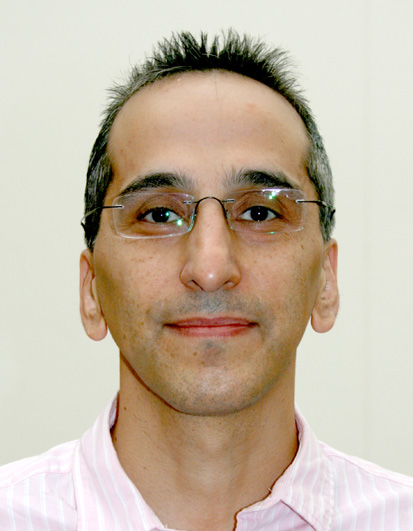
- Prof. Majid Mirmehdi
- University of Bristol
- Thursday 19th February 2009, 14:00
- Robert Recorde Room
We present a real-time text tracking system capable of detecting and tracking text using a hand-held mobile camera at rates of above 25 frames per second. The method is based on extracting text regions using a novel tree-based connected component filtering approach, combined with the Eigen-Transform texture descriptor. The method can efficiently handle dark and light text on light and dark backgrounds. Predictive tracking (using either particle filters or the unscented Kalman Filter) is used to follow the text in the face of multiple regions of interest, fast displacements, and erratic motions. Strengths and shortcomings of the approach, plus future work, will be discussed.